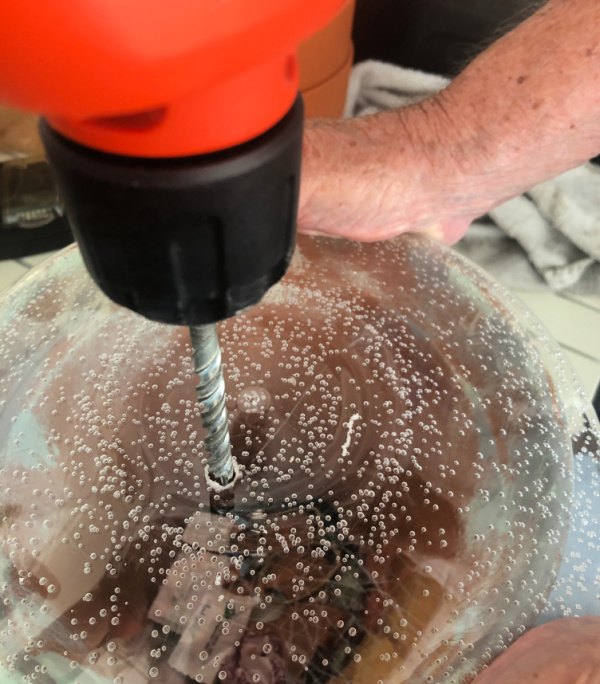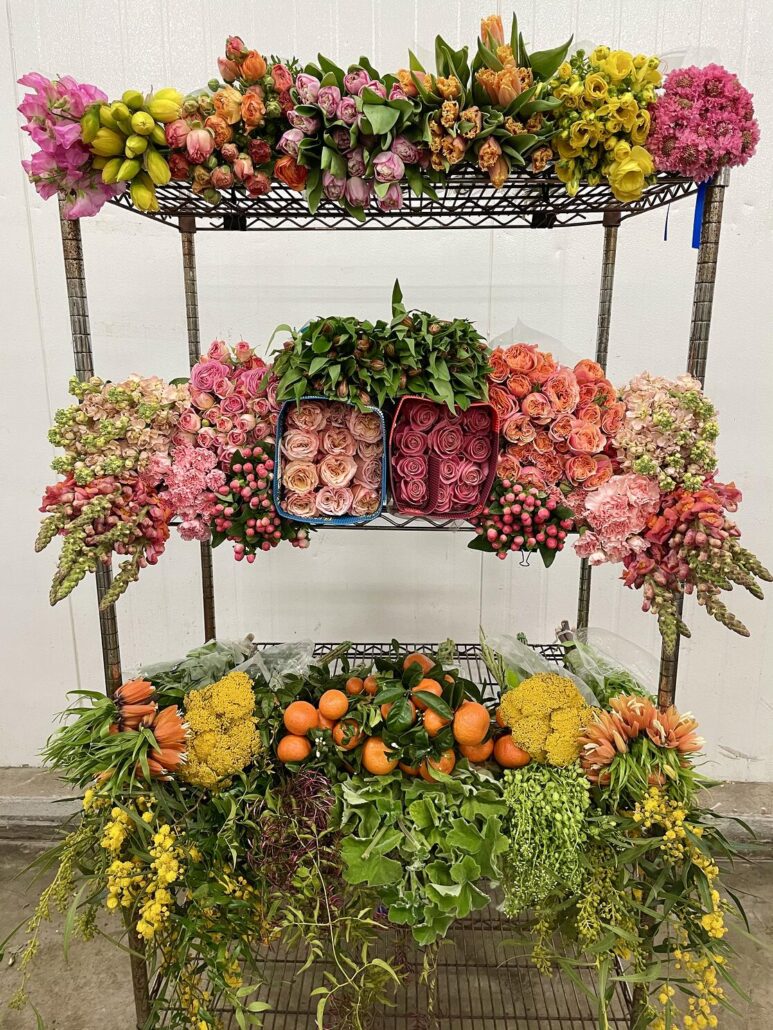
With the warm weather of spring and summer, many of us have the urge to get outdoors, spruce up the exteriors of our homes, and plant beautiful gardens. Yet without realizing it, we could be exposing our pets to serious dangers growing in our own backyard flowerbeds or on the coffee tables in our homes. This is because many common garden and houseplants can be toxic, even deadly, to pets such as dogs and cats.
Outdoor Plants
The possibility of a pet being exposed to a poisonous plant is greater outside than inside the safety of your home. The majority of plants toxic to animals are only dangerous when they are ingested, but some reactions are caused by skin contact, so keeping your dog from digging up flower bulbs may not be enough to prevent exposure to hazardous plants. Examples of poisonous outdoor plants include:
- Amaryllis – In dogs, ingestion of this plant’s toxins can result in “vomiting, depression, diarrhea, abdominal pain,” tremors, excessive drooling, and loss of appetite, according to PetMD’s Ten Common Poisonous Plants for Dogs.
- Azalea – Vomiting, diarrhea, and excessive drooling result from ingesting azalea leaves. Without prompt veterinary treatment, more severe reactions can result in coma and possibly death.
- Crocuses – Both types of crocus plant, the spring and autumn crocus, are poisonous to pets. However, while ingesting the spring crocus (Crocus) can cause gastrointestinal issues including diarrhea and vomiting, the autumn crocus (Colchicum autumnale) is more dangerous, causing respiratory failure and liver and kidney damage among other things.
- Cyclamen – Severe vomiting and even death can result from ingestion of this plant’s toxic roots.
- Daffodils – All parts of the daffodil plant are toxic to cats and dogs, and can cause gastrointestinal problems such as vomiting, diarrhea, and abdominal pain, and possibly even more severe symptoms including cardiac arrhythmias or respiratory depression. Daffodil bulbs are covered in a crystal that irritates the tissues in the mouth and esophagus, which is evidenced by profuse drooling.
- Lilies – In cats, acute renal failure can result from ingesting any part of the Lilium or Hemerocallis species (which include Easter lilies and tiger lilies, and day lilies, respectively). While not in the same family, lily-of-the-valley (Convallaria majalis) is also extremely poisonous, with symptoms of “severe vomiting, diarrhea, drop in heart rate, severe cardiac arrhythmias, and possibly seizures,” according to Pet Poison Helpline.
- Hyacinths and tulips – The alkaloids in hyacinths and the allergenic lactones in tulips can cause irritation in the mouth and esophagus. If only small amounts are ingested this results in excessive drooling, vomiting, and diarrhea, but ingestion of larger amounts may cause more severe symptoms such as respiratory problems or increased heart rate.
- Kalanchoe – “This popular flowering succulent plant can cause vomiting, diarrhea, and heart arrhythmias if ingested by pets,” Pet Poison Helpline warns.
- Oleander – The leaves of this popular shrub are extremely toxic if ingested, causing vomiting, decreased heart rate, and possibly death.
Houseplants
Although it may be more difficult to control what plants your dog or cat encounters outside, that does not mean there are no potential hazards indoors as well. In addition to the dangers of bringing any cut flowers of the aforementioned outdoor plants inside, houseplants can also pose a risk. Here are two such houseplants that have proven especially harmful to animals:
- Dieffenbachia – This is a common decorative plant in offices and homes, but if a cat or dog ingests it, it can cause oral irritation (resulting in drooling and difficulty swallowing) as well as gastrointestinal problems including nausea and vomiting.
- Sago palm – A popular houseplant in warmer climates, the sago palm is extremely harmful to pets. According to Pet Poison Helpline, ingesting any part of the plant—especially the seeds—can cause “vomiting, bloody stools, damage to the stomach lining, severe liver failure, and, in some cases, death.”
Mulch
It is common knowledge that chocolate is bad for dogs. Chocolate contains theobromine, a substance that can be toxic in large quantities—to humans as well as their canine companions. The difference is that humans metabolize theobromine much faster, allowing larger amounts to be consumed without risk of toxicity.
What does this have to do with mulch? Some mulches are made up of cocoa bean hulls, and can have the same effect on dogs as chocolate if they ingest them. Cocoa bean mulch is attractive to gardeners as an environmentally friendly, organic way to nourish the soil. But if you’re a gardener and dog owner, it would be best to look into other alternatives.
Treatment
Prevention is the first course of action when it comes to keeping pets safe from poisonous plants. If a pet is exposed despite preventive measures, however, taking immediate action can be the key to successful treatment and recovery. According to Alex Molldrem, DVM, there are four steps to follow if a pet exhibits symptoms of poisoning:
- Evaluate the symptoms. Try to identify the source the toxin, backtracking where and when your pet may have come into contact with it.
- Call the Pet Poison Helpline at 1-855-213-6680. As with most pet ailments, the sooner they are treated for toxicity, the better chance of recovery or at least minimizing any long-term damage.
- Do NOT give anything to your pet unless instructed to by a pet health professional. Home remedies can do more harm than good, and even if a treatment is widely accepted as helpful, that doesn’t mean it should be used in your pet’s particular case.
- Get veterinary help. While the Pet Poison Helpline can give you advice on immediate steps to take in treating your pet, it may be necessary to take them to the closest veterinarian to be examined in person. It is a good idea to bring the plant you think your pet has eaten.Common treatments often call for inducing vomiting, decontamination via enemas or binders, and flushing out the toxins with intravenous fluids. Bathing with liquid dish soap may be needed if the toxins were exposed to the pet’s skin rather than internally ingested, Molldrem says. This removes the toxins from the animal’s sebum, as Drs. Erik Dunayer and Valentina Merola explain in The 10 most common toxicoses in cats
As with most pet ailments, treatment is generally most effective when the symptoms are recognized early and treatment is begun promptly and aggressively. To do this, it’s important to be aware of what sort of plants your pet might encounter both inside and outside, and if possible remove those dangerous plants from their environment altogether .Sometimes it’s unpreventable to keep pets away from certain poisonous plants. Walking your dog or caring for an outdoor cat means they are exposed to environments beyond your control. In the event that prevention isn’t completely possible, it helps to know what sort of plants cause which symptoms. The Humane Society of the United States provides a link to a .pdf file of Plants Potentially Poisonous to Pets, which they suggest printing out and having close at hand in the event that your pet begins to present symptoms of poisoning. The ASCPA also has a searchable page of plants toxic to dogs, cats, as well as horses. Because getting treatment as quickly as possible is essential, keep emergency phone numbers where they’re easy to find or access, and know the route to the closest veterinary emergency service.
Conclusion
We care about our pets, and we want them to be as happy and healthy as possible. Whether it’s planning a garden for the spring and summer months, or even something as simple as purchasing a new houseplant, pet owners have more factors to consider when selecting plants than water and shade requirements. By taking into consideration which plants are harmful to animals, we can avoid toxicity dangers and create safe, healthy living environments for our pets.



















